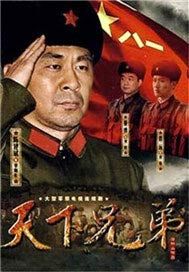当前位置:
纪实传记
> 一个瑜伽行者的自传
> 第七十二章 I Become A Monk
第七十二章 I Become A Monk
第七十二章 I Become A Monk Of The Swami Order
“Master,my father has been anxious for me to accept an executive position with the Bengal-Nagpur Railway。But I have defnitely refused it。”I added hopefully,“Sir,will you not make me a monk of the Swami Order?”
“Very well;tomorrow I will initiate you into swamiship。”He went on quietly,“I am happy that you have persisted in your desire to be a monk。Lahiri Mahasaya often said:‘If you don’t invite God to be your summer Guest,He won‘t come in the winter of your life。’”
The following day was one of the most memorable in my life。It was a sunny Thursday,I remember,in July,191,a few weeks after my graduation from college。On the inner balcony of his Serampore hermitage,Master dipped a new piece of white silk into a dye of ocher,the traditional color of the Swami Order。After the cloth had dried,my guru draped it around me as a renunciates robe。
“Someday you will go to the West,where silk is preferred,”he said。
In India,where monks embrace the ideal of poverty,a silk-clad swami is an unusual sight。Many yogis,however,wear garments of silk,which preserves certain subtle bodily currents better than cotton。
“I am averse to ceremonies,”Sri Yukteswar remarked。“I will make you a swami in the bidwat(non-ceremonious)manner。”
The bibidisa or elaborate initiation into swamiship includes a fre ceremony,during which symbolical funeral rites are performed。The physical body of the disciple is represented as dead,cremated in the fame of wisdom。The newly-made swami is then given a chant,such as:“This atma is Brahma”or“Thou art That”or“I am He”。Sri Yukteswar,however,with his love of simplicity,dispensed with all formal rites and merely asked me to select a new name。
“I will give you the privilege of choosing it yourself,”he said,smiling。
“Yogananda,”I replied,after a moments thought。The name literally means“Bliss(ananda)through divine union(yoga)”。
“Be it so。Forsaking your family name of Mukunda Lal Ghosh,henceforth you shallbe called Yogananda of the Giri branch of the Swami Order。”
The boy Mukunda be someday transformed into the monk Yogananda!I joyfully sang a few verses from the long Sanskrit chant of Lord Shankara:
Mind,nor intellect,nor ego,feeling;
Sky nor earth nor metals am I。
I am He,I am He,Blessed Spirit,I am He!
No birth,no death,no caste have I;
Father,mother,have I none。
I am He,I am He,Blessed Spirit,I am He!
Beyond the fights of fancy,formless am I,
Permeating the limbs of all life;
Bondage I do not fear;I am free,ever free,
I am He,I am He,Blessed Spirit,I am He!
Every swami belongs to the ancient monastic order which was organized in its present form by Shankara。Because it is a formal order,with an unbroken line of saintly representatives serving as active leaders,no man can give himself the title of swami。He rightfully receives it only from another swami;all monks thus trace their spiritual lineage to one common guru,Lord Shankara。
In addition to his new name,usually ending in ananda,the swami takes a title which indicates his formal connection with one of the ten subdivisions of the Swami Order。These dasanamis or ten agnomens include the Giri(mountain),to which Sri Yukteswar,and hence myself,belong。Among the other branches are the Sagar(sea),Bharati(land),Aranya(forest),Puri(tract),Tirtha(place of pilgrimage),and Saraswati(wisdom of nature)。
The new name received by a swami thus has a twofold signifcance,and represents the attainment of supreme bliss(ananda)through some divine quality or state-love,wisdom,devotion,service,yoga-and through a harmony with nature,as expressed in her infnite vastness of oceans,mountains,skies。
Sri Yukteswar was both a swami and a yogi。A swami,formally a monk by virtue of his connection with the ancient order,is not always a yogi。Anyone who practices a scientifc technique of God-contact is a yogi;he may be either married or unmarried,either a worldly man or one of formal religious ties。A swami may conceivably follow only the path of dry reasoning,of cold renunciation;but a yogi engages himself in adefnite,step-by-step procedure by which the body and mind are disciplined,and the soul liberated。Taking nothing for granted on emotional grounds,or by faith,a yogi practices a thoroughly tested series of exercises which were frst mapped out by the early rishis。Yoga has produced,in every age of India,men who became truly free,truly Yogi-Christs。
Like any other science,yoga is applicable to people of every clime and time。
The ancient rishi Patanjali defnes“yoga”as“control of the fuctuations of the mind-stuff。”His very short and masterly expositions,the Yoga Sutras,form one of the six systems of Hindu philosophy。In contradistinction to Western philosophies,all six Hindu systems embody not only theoretical but practical teachings。In addition to every conceivable ontological inquiry,the six systems formulate six defnite disciplines aimed at the permanent removal of suffering and the attainment of timeless bliss。
The common thread linking all six systems is the declaration that no true freedom for man is possible without knowledge of the ultimate Reality。The later Upanishads uphold the Yoga Sutras,among the six systems,as containing the most effcacious methods for achieving direct perception of truth。Through the practical techniques of yoga,man leaves behind forever the barren realms of speculation and cognizes in experience the veritable Essence。
The Yoga system as outlined by Patanjali is known as the Eightfold Path。The frst steps,(1)yama and(2)niyama,require observance of ten negative and positive moralities-avoidance of injury to others,of untruthfulness,of stealing,of incontinence,of gift-receiving(which brings obligations);and purity of body and mind,contentment,self-discipline,study,and devotion to God。
The next steps are(3)asana(right posture);the spinal column must be held straight,and the body frm in a comfortable position for meditation;(4)pranayama(control of prana,subtle life currents);and(5)pratyahara(withdrawal of the senses from external objects)。
The last steps are forms of yoga proper:(6)dharana(concentration);holding the mind to one thought;(7)dhyana(meditation),and(8)samadhi(superconscious perception)。This is the Eightfold Path of Yoga which leads one to the final goal of Kaivalya(Absoluteness),a term which might be more comprehensibly put as“realization of the Truth beyond all intellectual apprehension。”
The Bhagavad Gita,however,points out that the methods of yoga are all-embracive。Its techniques are not meant only for certain types and temperaments,such as those few who incline toward the monastic life;yoga requires no formal allegiance。Because the yogic science satisfes a universal need,it has a natural universal applicability。
Among many thoughtful tributes to yoga may be mentioned one by Dr。C。G。Jung,the famous Swiss psychologist。
“When a religious method recommends itself as‘scientifc’,it can be certain of its public in the West。Yoga fulflls this expectation,”Dr。Jung writes。Quite apart from the charm of the new,and the fascination of the half-understood,there is good cause for Yoga to have many adherents。It offers the possibility of controllable experience,and thus satisfes the scientifc need of‘facts’,and besides this,by reason of its breadth and depth,its venerable age,its doctrine and method,which include every phase of life,it promises undreamed-of possibilities。
Every religious or philosophical practice means a psychological discipline,that is,a method of mental hygiene。The manifold,purely bodily procedures of Yoga also mean a physiological hygiene which is superior to ordinary gymnastics and breathing exercises,inasmuch as it is not merely mechanistic and scientifc,but also philosophical;in its training of the parts of the body,it unites them with the whole of the spirit,as is quite clear,for instance,in the Pranayama exercises where Prana is both the breath and the universal dynamics of the cosmos。
When the thing which the individual is doing is also a cosmic event,the effect experienced in the body(the innervation),unites with the emotion of the spirit(the universal idea),and out of this there develops a lively unity which no technique,however scientific,can produce。Yoga practice is unthinkable,and would also be ineffectual,without the concepts on which Yoga is based。It combines the bodily and the spiritual with each other in an extraordinarily complete way。
“In the East,where these ideas and practices have developed,and where for several thousand years an unbroken tradition has created the necessary spiritual foundations,Yoga is,as I can readily believe,the perfect and appropriate method of fusing body and mind together so that they form a unity which is scarcely to be questioned。This unity creates a psychological disposition which makes possible intuitions that transcend consciousness。”
“Master,my father has been anxious for me to accept an executive position with the Bengal-Nagpur Railway。But I have defnitely refused it。”I added hopefully,“Sir,will you not make me a monk of the Swami Order?”
“Very well;tomorrow I will initiate you into swamiship。”He went on quietly,“I am happy that you have persisted in your desire to be a monk。Lahiri Mahasaya often said:‘If you don’t invite God to be your summer Guest,He won‘t come in the winter of your life。’”
The following day was one of the most memorable in my life。It was a sunny Thursday,I remember,in July,191,a few weeks after my graduation from college。On the inner balcony of his Serampore hermitage,Master dipped a new piece of white silk into a dye of ocher,the traditional color of the Swami Order。After the cloth had dried,my guru draped it around me as a renunciates robe。
“Someday you will go to the West,where silk is preferred,”he said。
In India,where monks embrace the ideal of poverty,a silk-clad swami is an unusual sight。Many yogis,however,wear garments of silk,which preserves certain subtle bodily currents better than cotton。
“I am averse to ceremonies,”Sri Yukteswar remarked。“I will make you a swami in the bidwat(non-ceremonious)manner。”
The bibidisa or elaborate initiation into swamiship includes a fre ceremony,during which symbolical funeral rites are performed。The physical body of the disciple is represented as dead,cremated in the fame of wisdom。The newly-made swami is then given a chant,such as:“This atma is Brahma”or“Thou art That”or“I am He”。Sri Yukteswar,however,with his love of simplicity,dispensed with all formal rites and merely asked me to select a new name。
“I will give you the privilege of choosing it yourself,”he said,smiling。
“Yogananda,”I replied,after a moments thought。The name literally means“Bliss(ananda)through divine union(yoga)”。
“Be it so。Forsaking your family name of Mukunda Lal Ghosh,henceforth you shallbe called Yogananda of the Giri branch of the Swami Order。”
The boy Mukunda be someday transformed into the monk Yogananda!I joyfully sang a few verses from the long Sanskrit chant of Lord Shankara:
Mind,nor intellect,nor ego,feeling;
Sky nor earth nor metals am I。
I am He,I am He,Blessed Spirit,I am He!
No birth,no death,no caste have I;
Father,mother,have I none。
I am He,I am He,Blessed Spirit,I am He!
Beyond the fights of fancy,formless am I,
Permeating the limbs of all life;
Bondage I do not fear;I am free,ever free,
I am He,I am He,Blessed Spirit,I am He!
Every swami belongs to the ancient monastic order which was organized in its present form by Shankara。Because it is a formal order,with an unbroken line of saintly representatives serving as active leaders,no man can give himself the title of swami。He rightfully receives it only from another swami;all monks thus trace their spiritual lineage to one common guru,Lord Shankara。
In addition to his new name,usually ending in ananda,the swami takes a title which indicates his formal connection with one of the ten subdivisions of the Swami Order。These dasanamis or ten agnomens include the Giri(mountain),to which Sri Yukteswar,and hence myself,belong。Among the other branches are the Sagar(sea),Bharati(land),Aranya(forest),Puri(tract),Tirtha(place of pilgrimage),and Saraswati(wisdom of nature)。
The new name received by a swami thus has a twofold signifcance,and represents the attainment of supreme bliss(ananda)through some divine quality or state-love,wisdom,devotion,service,yoga-and through a harmony with nature,as expressed in her infnite vastness of oceans,mountains,skies。
Sri Yukteswar was both a swami and a yogi。A swami,formally a monk by virtue of his connection with the ancient order,is not always a yogi。Anyone who practices a scientifc technique of God-contact is a yogi;he may be either married or unmarried,either a worldly man or one of formal religious ties。A swami may conceivably follow only the path of dry reasoning,of cold renunciation;but a yogi engages himself in adefnite,step-by-step procedure by which the body and mind are disciplined,and the soul liberated。Taking nothing for granted on emotional grounds,or by faith,a yogi practices a thoroughly tested series of exercises which were frst mapped out by the early rishis。Yoga has produced,in every age of India,men who became truly free,truly Yogi-Christs。
Like any other science,yoga is applicable to people of every clime and time。
The ancient rishi Patanjali defnes“yoga”as“control of the fuctuations of the mind-stuff。”His very short and masterly expositions,the Yoga Sutras,form one of the six systems of Hindu philosophy。In contradistinction to Western philosophies,all six Hindu systems embody not only theoretical but practical teachings。In addition to every conceivable ontological inquiry,the six systems formulate six defnite disciplines aimed at the permanent removal of suffering and the attainment of timeless bliss。
The common thread linking all six systems is the declaration that no true freedom for man is possible without knowledge of the ultimate Reality。The later Upanishads uphold the Yoga Sutras,among the six systems,as containing the most effcacious methods for achieving direct perception of truth。Through the practical techniques of yoga,man leaves behind forever the barren realms of speculation and cognizes in experience the veritable Essence。
The Yoga system as outlined by Patanjali is known as the Eightfold Path。The frst steps,(1)yama and(2)niyama,require observance of ten negative and positive moralities-avoidance of injury to others,of untruthfulness,of stealing,of incontinence,of gift-receiving(which brings obligations);and purity of body and mind,contentment,self-discipline,study,and devotion to God。
The next steps are(3)asana(right posture);the spinal column must be held straight,and the body frm in a comfortable position for meditation;(4)pranayama(control of prana,subtle life currents);and(5)pratyahara(withdrawal of the senses from external objects)。
The last steps are forms of yoga proper:(6)dharana(concentration);holding the mind to one thought;(7)dhyana(meditation),and(8)samadhi(superconscious perception)。This is the Eightfold Path of Yoga which leads one to the final goal of Kaivalya(Absoluteness),a term which might be more comprehensibly put as“realization of the Truth beyond all intellectual apprehension。”
The Bhagavad Gita,however,points out that the methods of yoga are all-embracive。Its techniques are not meant only for certain types and temperaments,such as those few who incline toward the monastic life;yoga requires no formal allegiance。Because the yogic science satisfes a universal need,it has a natural universal applicability。
Among many thoughtful tributes to yoga may be mentioned one by Dr。C。G。Jung,the famous Swiss psychologist。
“When a religious method recommends itself as‘scientifc’,it can be certain of its public in the West。Yoga fulflls this expectation,”Dr。Jung writes。Quite apart from the charm of the new,and the fascination of the half-understood,there is good cause for Yoga to have many adherents。It offers the possibility of controllable experience,and thus satisfes the scientifc need of‘facts’,and besides this,by reason of its breadth and depth,its venerable age,its doctrine and method,which include every phase of life,it promises undreamed-of possibilities。
Every religious or philosophical practice means a psychological discipline,that is,a method of mental hygiene。The manifold,purely bodily procedures of Yoga also mean a physiological hygiene which is superior to ordinary gymnastics and breathing exercises,inasmuch as it is not merely mechanistic and scientifc,but also philosophical;in its training of the parts of the body,it unites them with the whole of the spirit,as is quite clear,for instance,in the Pranayama exercises where Prana is both the breath and the universal dynamics of the cosmos。
When the thing which the individual is doing is also a cosmic event,the effect experienced in the body(the innervation),unites with the emotion of the spirit(the universal idea),and out of this there develops a lively unity which no technique,however scientific,can produce。Yoga practice is unthinkable,and would also be ineffectual,without the concepts on which Yoga is based。It combines the bodily and the spiritual with each other in an extraordinarily complete way。
“In the East,where these ideas and practices have developed,and where for several thousand years an unbroken tradition has created the necessary spiritual foundations,Yoga is,as I can readily believe,the perfect and appropriate method of fusing body and mind together so that they form a unity which is scarcely to be questioned。This unity creates a psychological disposition which makes possible intuitions that transcend consciousness。”



















